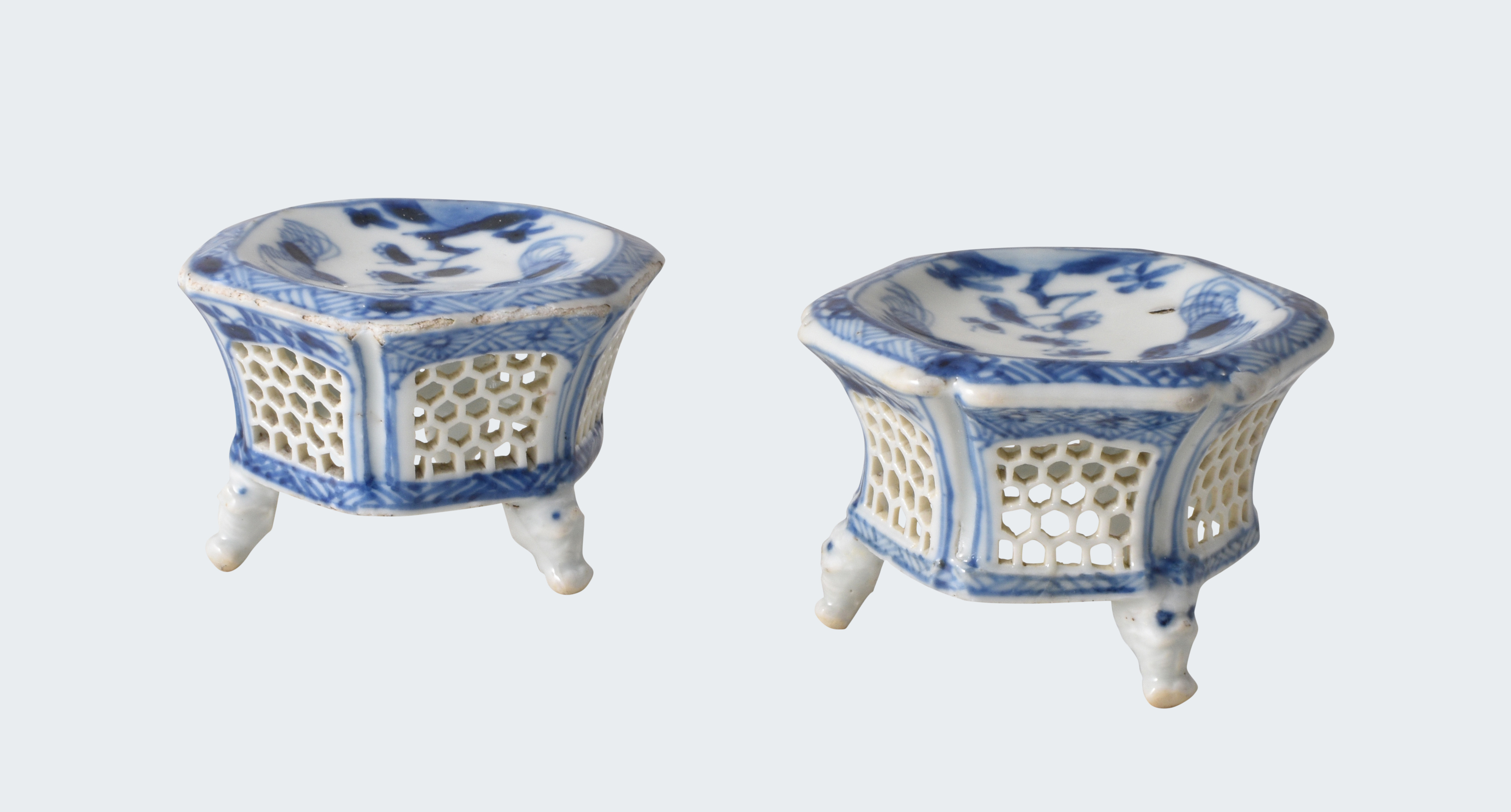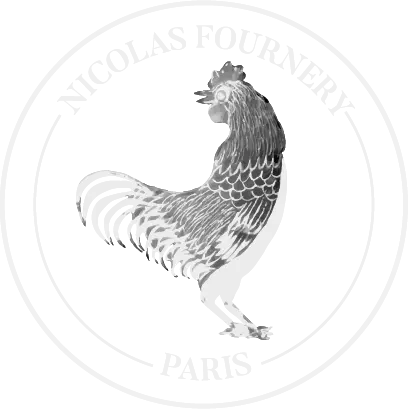Of hexagonal section, standing on three low animal-mask feet, the well painted in shades of underglaze blue with two cockerels facing each other under a prunus sprig, and the sides with pierced honeycomb diaper panels enclosed by a narrow bands of floral and geometric patterns.

